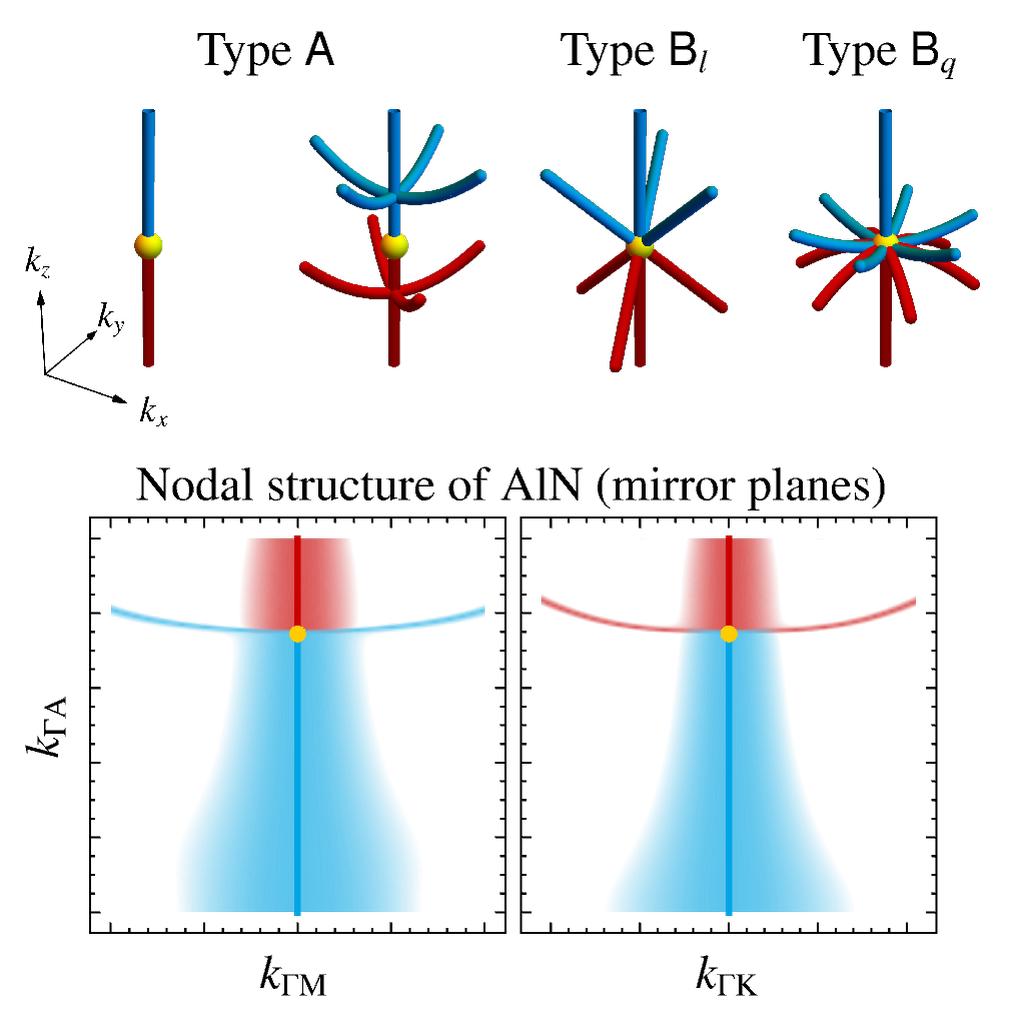Triple nodal points characterized by their nodal-line structure in all magnetic space groups

 PDF
Journal
arXiv
Data/Code
PDF
Journal
arXiv
Data/Code
P. M. Lenggenhager, X. Liu, T. Neupert, and T. Bzdušek
Phys. Rev. B 106, 085128 (2022) – Published 18 Aug 2022

We extend the classification of three-fold momentum-space band structure degeneracies (triple points) to all (magnetic) space groups, including the non-symmorphic ones. The classification is based on the symmetry properties of the high-symmetry line in momentum space on which the degeneracy lies and predicts the nodal-line structure at and near the triple point. In particular, we predict the presence, number and behavior of nodal-line arcs connecting to the central nodal line (along the high-symmetry line) at nexus points. We illustrate the classification results on several material examples using first-principles calculations.
Abstract
We analyze triply degenerate nodal points [or triple points (TPs) for short] in energy bands of crystalline solids. Specifically, we focus on spinless band structures, i.e., when spin-orbit coupling is negligible, and consider TPs formed along high-symmetry lines in the momentum space by a crossing of three bands transforming according to a 1D and a 2D irreducible corepresentation (ICR) of the little co-group. The result is a complete classification of such TPs in all magnetic space groups, including the non-symmorphic ones, according to several characteristics of the nodal-line structure at and near the TP. We show that the classification of the presently studied TPs is exhausted by 13 magnetic point groups (MPGs) that can arise as the little co-group of a high-symmetry line and which support both 1D and 2D spinless ICRs. For 10 of the identified MPGs, the TP characteristics are uniquely determined without further information; in contrast, for the 3 MPGs containing sixfold rotation symmetry, two types of TPs are possible, depending on the choice of the crossing ICRs. The classification result for each of the 13 MPGs is illustrated with first-principles calculations of a concrete material candidate.